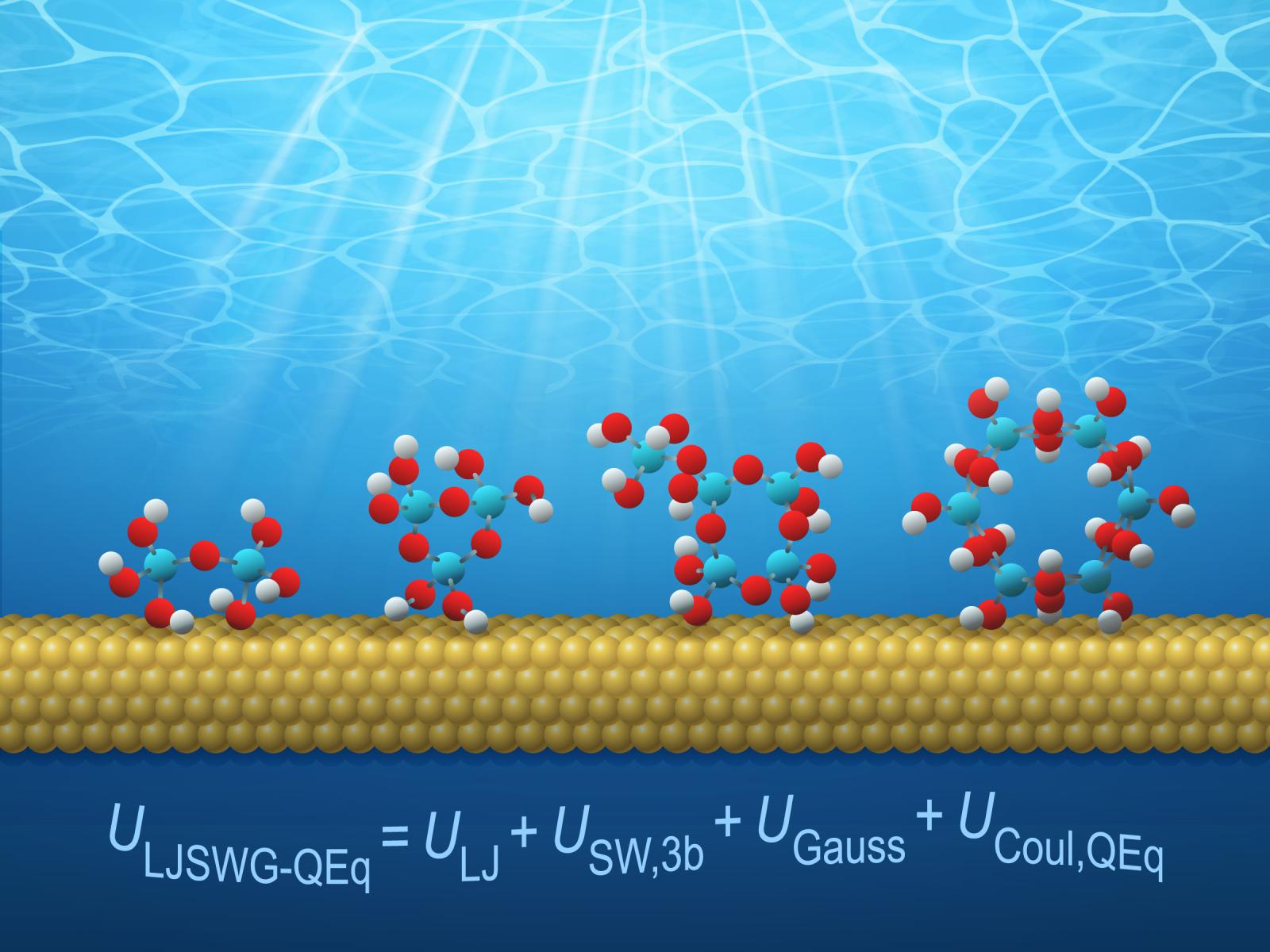A New Efficient Reactive Force Field for Studying Aluminum Chemistry
IDREAM research shows that keeping only the most important two- and three-body terms in reactive force fields can decrease computational cost by one order of magnitude, while preserving satisfactory accuracy

A new force field will be used to study aluminate oligomerization and the early-stage nucleation of solid phases.
(Image by Nathan Johnson | Pacific Northwest National Laboratory)
The Science
Reactive force fields (RFFs) can model chemical reactions with much more efficiency than quantum mechanical approaches, but are still more computationally expensive than non-reactive approaches. Researchers developed a new RFF with a small set of parameters to model the reactivity of aluminum species in alkaline conditions. This RFF does not use terms based on atom coordination, unlike standard RFFs, and reduces the computational expense by one order of magnitude.
The Impact
Understanding chemical processes at a molecular level often requires modeling. However, sufficient statistical sampling of large and complex molecular systems requires significant computational time and power. The new RFF developed in this work provides better accuracy than a general-purpose, semi-empirical quantum chemistry method while reaching time and spatial scales on the same order of magnitude as that of non-reactive force fields.
Summary
RFFs are a faster alternative to quantum mechanical methods for exploring chemical reactions in the condensed phase. However, there is an ongoing need to enhance the efficiency of RFFs; particularly in systems with slow molecular motion such as in highly concentrated water-in-salt solutions. This is relevant to the processing and safe storage of Cold War nuclear waste as well as the development of new electrochemical energy storage devices. Researchers developed an RFF based on variable atomic charges, two-body terms, and three-body terms to study oligomerization processes in sodium aluminate solutions. While the parameterization of most RFFs is based on reference reaction energies in the gas phase, this model was primarily fitted on energies and forces from ab initio molecular dynamics simulations of aqueous solutions. Thus, the model intrinsically captures solvent effects. Validation of the new RFF was performed by comparing the structure of simulated solutions to experimental results and comparing the oligomerization energies to those predicted by quantum mechanical methods. By reducing the number of terms in the analytical form, the RFF significantly reduces computational costs, enabling large-scale simulations of early-stage aluminum hydroxide nucleation while maintaining sufficient accuracy to increase the utility of these simulations under the complex conditions of nuclear waste processing.
Contacts
Carolyn Pearce, Pacific Northwest National Laboratory, carolyn.pearce@pnnl.gov
Aurora Clark, University of Utah, aurora.clark@utah.edu
Funding
The research was supported by IDREAM (Interfacial Dynamics in Radioactive Environments and Materials), an Energy Frontier Research Center funded by the Department of Energy (DOE), Office of Science, Basic Energy Sciences (BES) program. Molecular simulations utilized resources from PNNL Research Computing, the Center for Institutional Research Computing at Washington State University, and the Center for High Performance Computing at the University of Utah. The research at the NOMAD instrument, Spallation Neutron Source at Oak Ridge National Laboratory, was supported by the Scientific User Facilitates division, BES, DOE. The research at the 11-ID-B beamline, Advanced Photon Source, Argonne National Laboratory was also supported by the Scientific User Facilitates Division, BES, DOE.
Published: July 31, 2023
Pouvreau, M., Q. Guo, H.-W. Wang, G. K. Schenter, A. Clark, C. I. Pearce, and K. M. Rosso. 2023. “An Efficient Reactive Force Field without Explicit Coordination Dependence for Studying Caustic Aluminum Chemistry”, J. Phys. Chem. Lett.,14. [DOI: 10.1021/acs.jpclett.3c01176]